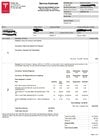We just replaced our original, pre-production 85 kWh battery in our 2012 Signature Edition P85 at 122,000 miles. While a remanufactured battery might have been an option at $16,000 installed, it would have charged at only 90kW maximum, had a "rated range" of 256 miles, and had a 12 month/12,000 miles warranty. Instead we chose to upgrade to a new 90 kWh battery, which is capable of charging (under ideal conditions) at up to 250 kW, and gives us closer to 300 miles of range for $22,000 installed. It also comes with a 4 year/50,000 miles warranty.



